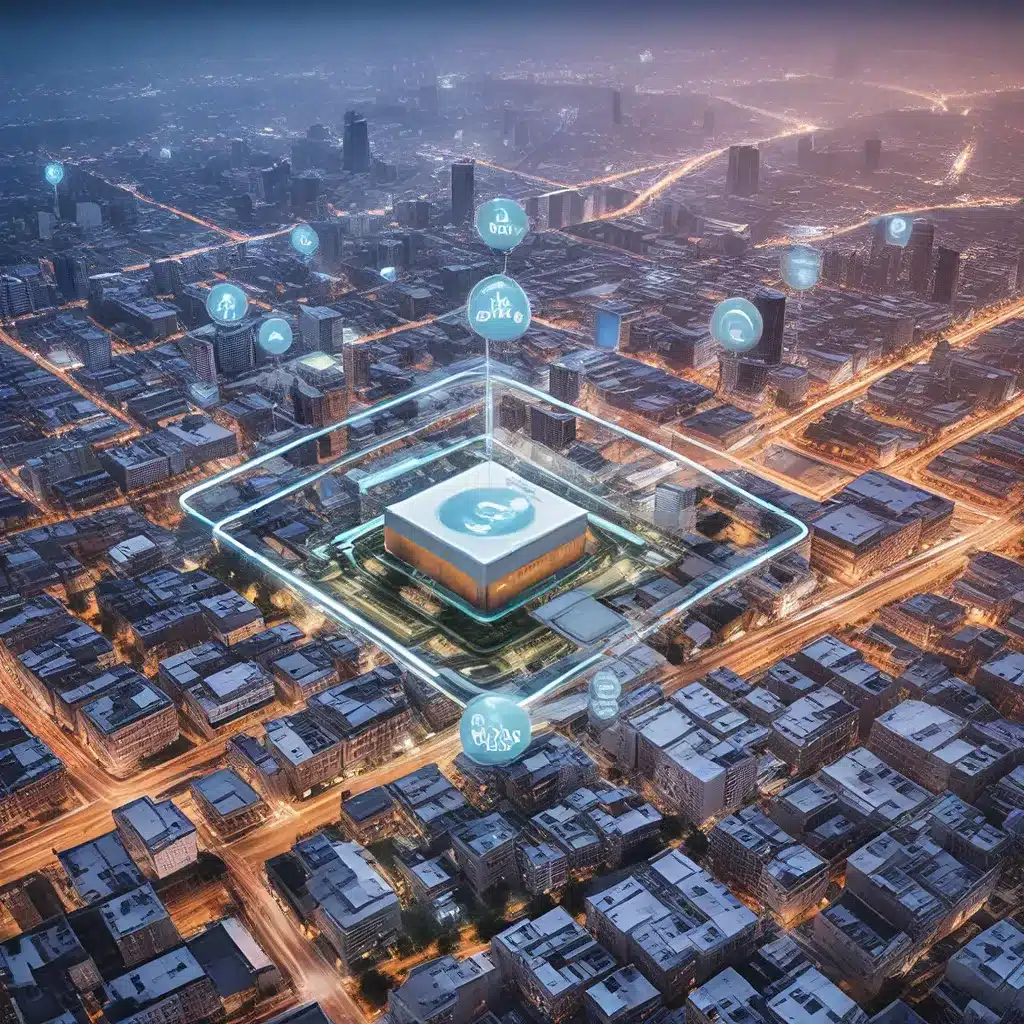
In the ever-evolving landscape of technology, two groundbreaking innovations have converged to reshape the way we interact with the world around us: the Internet of Things (IoT) and machine learning. This powerful synergy holds the key to unlocking unprecedented opportunities for efficiency, automation, and innovation across a wide range of industries.
Harnessing the Power of Connected Devices and Intelligent Algorithms
The Internet of Things refers to the network of interconnected physical devices, vehicles, appliances, and other objects embedded with sensors, software, and network connectivity. These smart devices are capable of collecting and exchanging vast amounts of real-time data, providing valuable insights and enabling intelligent decision-making.
On the other hand, machine learning is a subset of artificial intelligence that empowers systems to learn and improve from experience without being explicitly programmed. By applying machine learning algorithms to the data generated by IoT devices, organizations can gain deeper insights, make informed decisions, and create adaptive systems that optimize themselves over time.
The fusion of IoT and machine learning offers a glimpse into a future where intelligent, interconnected devices seamlessly integrate with our daily lives, revolutionizing industries and transforming the way we interact with technology.
Unlocking Unprecedented Opportunities
The combination of IoT and machine learning holds the potential to drive innovation and optimization across a wide range of sectors, from healthcare and manufacturing to transportation and agriculture.
Enhancing Predictive Capabilities
One of the primary advantages of IoT is its ability to generate vast amounts of real-time data from various sources. By leveraging machine learning algorithms to analyze this data, organizations can uncover hidden insights, detect anomalies, predict outcomes, and automate decision-making processes.
For instance, in the manufacturing industry, machine learning algorithms can analyze sensor data to predict equipment failures and optimize maintenance schedules, reducing downtime and maximizing productivity. Similarly, in the healthcare sector, wearable IoT devices can collect vital signs and other health-related data, which machine learning models can then analyze to identify early warning signs of diseases, enable remote patient monitoring, and even predict health outcomes.
Enabling Autonomous Systems
The integration of IoT and machine learning paves the way for the development of autonomous systems that can operate and adapt without human intervention. By combining sensors, actuators, and machine learning algorithms, IoT devices can gather data from their environment, learn from it, and make autonomous decisions or trigger actions accordingly.
This has significant implications in areas such as self-driving cars, robotics, and smart cities. Autonomous vehicles, for example, can use IoT sensors to perceive their surrounding environment, while machine learning algorithms analyze the data to make real-time decisions, leading to safer and more efficient transportation.
Enhancing Human-Computer Interaction
The synergy of IoT and machine learning is also enhancing human-computer interaction by enabling smart interfaces and adaptive systems. Smart devices, such as voice assistants, smart speakers, and wearable devices, create an interconnected ecosystem that can seamlessly interact with humans.
Machine learning algorithms analyze data from these devices, including user preferences, behavior patterns, and contextual information, to deliver personalized and adaptive experiences. For example, smart home systems can learn individual users’ habits and automatically adjust lighting, temperature, and entertainment preferences, creating a seamless and tailored living environment.
Navigating the Challenges
While the potential of IoT and machine learning is undeniable, there are also challenges and concerns that need to be addressed to fully unlock their transformative power.
Security and Privacy Considerations
The vast amounts of sensitive data generated by IoT devices require robust security measures and privacy safeguards. Machine learning algorithms must be designed to detect and mitigate potential security breaches, ensuring the protection of user information and preventing unauthorized access to critical systems.
Ethical Considerations
Ethical considerations surrounding data ownership, transparency, and bias in machine learning algorithms also deserve careful attention. As these technologies become increasingly integrated into our lives, it is crucial to ensure fairness, prevent discrimination, and maintain transparency in the decision-making processes.
Embracing the Synergy of IoT and Machine Learning
As we stand at the forefront of a new technological frontier, the convergence of IoT and machine learning presents a future rich with potential. From optimizing operations and predicting outcomes to enabling autonomous systems and enhancing human-computer interaction, the combination of these two fields has the power to drive innovation across industries.
By embracing the synergy of IoT and machine learning, organizations can unlock unprecedented opportunities for efficiency, automation, and unparalleled innovation. However, it is essential to navigate the challenges of security, privacy, and ethical considerations to ensure that the full potential of this transformative technology is unleashed.
As the world continues to explore and embrace the power of sensor networks and IoT, the future holds a promise of seamlessly integrated, intelligent systems that augment our lives and reshape the way we interact with the world around us.